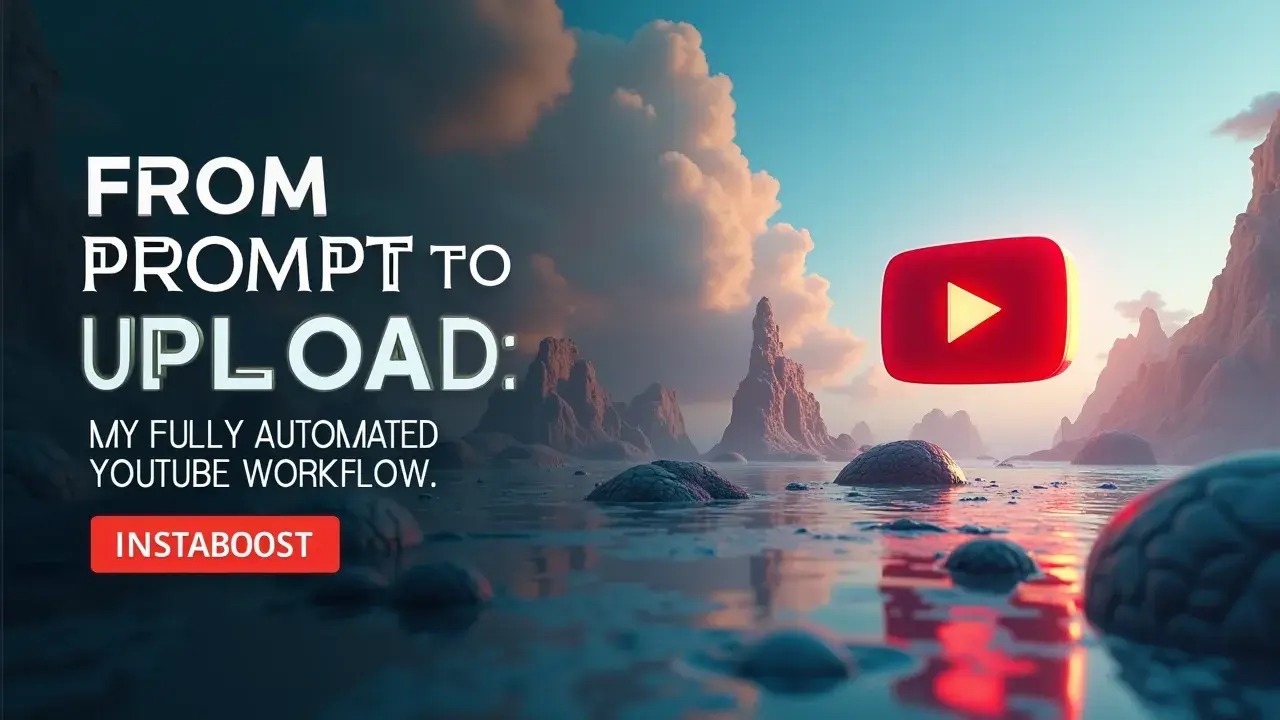Is a Fully Automated YouTube Workflow Worth It?
A fully automated YouTube workflow can move an idea from prompt to upload with fewer delays while keeping the creator’s voice intact. It suits weekly publishing and basic retention tracking, helping watch time hold when the handoffs between steps are minimized. Choosing between YouTube Shorts and longform affects subscriber growth, balancing quick discovery with watch time depth. Pair formats, track retention, and schedule smart to sustain momentum and quality.
Why Automating the Middle Wins
A fully automated YouTube workflow isn’t a magic button. It’s a system that turns a clear prompt into a published video while keeping your creative fingerprint intact. The payoff is compounding speed. When ideation, scripting, voice, editing, packaging, and upload are chained with guardrails – style presets, vetted AI models, brand voice libraries, and publishing checklists – you cut the friction that stalls weekly publishing. It works when each step is matched to its best‑fit tool and checked by lightweight signals: draft scripts scored for hook strength, B‑roll mapped to keyword‑driven beats, and thumbnails A/B seeded with real comments folded back into the next prompt.
The smart path is pairing automation with retention signals and clean analytics. Track average view duration, first‑30‑second drop‑off, and end‑screen CTR, then let those metrics reshape your prompts and edit rules. If you run ads or targeted promotion to spark early momentum, keep to qualified audiences and measure impact against watch time, not just views. Shorts can kick discovery while longform builds depth – schedule both, and tune cadence to how your audience actually finishes videos. Use creator collabs, licensed music, and reputable voice cloning to preserve tone in batch production, and keep a testing loop – one variable per upload, results reviewed before the next prompt.
The commercial edge isn’t the tools. It’s the pairing – automation for throughput, human taste for the 10 percent that moves retention. From prompt to upload, you’re building a repeatable pipeline that scales without sounding generic, which is how subscribers grow while your editing queue shrinks on schedule, and there’s room to optimize YouTube marketing without losing the voice that makes the channel stick.

Proof That Automation Doesn’t Dilute Your Voice
I learned this while fixing someone else’s mess. A team chained together half a dozen tools, hit render, and wondered why their automated YouTube workflow produced generic videos and flat retention. The problem wasn’t automation. It was the lack of constraints and feedback. Once we added style presets, a brand voice library, and a publishing checklist, the same system started making videos that felt like their channel – tight hooks, specific examples, and pacing tuned to their audience. Credibility comes from the guardrails you choose and the signals you measure.
Use reputable transcription and TTS models that match your tone. Test a small set of editing templates against retention curves. Gate uploads behind a human-in-the-loop pass that checks claims, citations, and B‑roll relevance. Paid accelerants help when they’re matched to intent – targeted promotion to warm audiences after the first 500 views, not before, and a short A/B budget to validate thumbnails against real comments, not vanity metrics; in the same vein, some teams quietly expand your YouTube audience only after they’ve proven watchability so the signal stays clean. For discovery, pair YouTube Shorts to spark early momentum and longform for depth, then watch how suggested traffic and average view duration move together.
The system works when it’s closed loop. Prompts pull from a vetted idea bank, scripts enforce structure (hook, promise, proof, payoff), edits align with retention dips, and uploads respect timing windows your analytics actually confirm. This is prompt to upload without losing your fingerprint – automation handles the repetitive steps and you lock the taste. The non-obvious bit is that credibility is less about what you say in the video and more about the consistency of your process. Clean analytics, creator collabs for borrowed trust, and a disciplined testing loop turn automation from a shortcut into a standard.
Choose Your Levers, Then Instrument Them
You don’t need trends, you need traction. Treat a fully automated YouTube workflow like a portfolio of levers you can instrument, not a black box you hope will spit out bangers. Start by matching format to intent. Use Shorts for discovery momentum, and longform for depth and watch time that actually moves suggested traffic. Use your prompt to define the promise, then bind the system with style presets and a brand voice library so the script, voice, and edit inherit your cadence instead of a generic AI median. Build a testing loop that measures retention signals at the beat level – the first 30 seconds, drop-off at example transitions, the bump on story payoffs – and iterate presets, not just scripts.
Keep analytics clean by separating views from targeted promotion versus organic so you’re not chasing noisy lifts. When you use paid accelerants, treat them like wind tunnels. Warm the right audiences with creator collabs and topical clips, then validate with real comments and returning viewer rate before you scale; if you’re benchmarking social proof inputs, factor in baselines such as engagement-weighted velocity and trusted likes for YouTube creators when interpreting early signals. Keep a light human-in-the-loop at the hook and packaging layer. Those two moves swing CTR and average view duration more than any micro-edit.
Automate the drudgery – assembly edits, cut detection, B-roll suggestions, captions – while locking your “why this matters” lines as non-editable markers. If you schedule uploads, stagger Shorts to precede longform by 24 – 48 hours to seed qualified viewers, then check audience overlap in analytics to calibrate. The goal isn’t speed alone. It’s repeatable signal. A reputable tool stack and a publishing checklist make uploads reliable, and traction comes from pairing that reliability with specific feedback loops – watch time graphs, save and share rates, and comment language patterns. When those loops drive your prompts and presets, the system compounds instead of drifting.
Quality Beats Volume In Automation
Let’s retire the idea that more automatically means better. If your fully automated YouTube workflow ships seven middle‑of‑the‑road videos a week, you train the algorithm and your audience to expect average. The real lever isn’t brute volume. It’s the signal density in each upload. Define the promise with clear prompts, use style presets to lock tone and pacing, and follow edit rules that protect clarity. Scale your cadence only after the signals are clean: strong AVD, a stable CTR that doesn’t cliff after 10 seconds, comments that quote specifics, and chapters viewers actually scrub to.
Use Shorts to build early momentum and test hooks. Then promote only the Shorts that drive qualified session starts to longform rather than vanity spikes. Paid accelerants can work when you buy from reputable placements matched to intent and cap them with clean analytics – without that fit and measurement, you’ll smear your data and stall suggested traffic. Collab segments with aligned creators tend to beat random shoutouts when you brief them with your brand voice library and a concrete retention goal. Tools don’t flatten voice – sloppy inputs and uninstrumented outputs do. Instrument your portfolio with hook variants A/B tested across formats, thumbnail alt text that mirrors the verbal promise, and end screen paths that extend session time instead of scattering attention; if you experiment with external traffic, treat it like any other lever and source it from a trusted YouTube video view service only when it aligns with intent and measurement.
If you can’t measure it yet, stage it. Run an unlisted dry run, read real comments, and tighten the publishing checklist before you scale. The smart constraint is simple: one great upload with tuned signals beats three forgettable ones that pull oxygen from your own backlog. That’s how prompt to upload stops feeling like a factory and becomes a feedback engine that compounds watch time and real subscriber growth.















